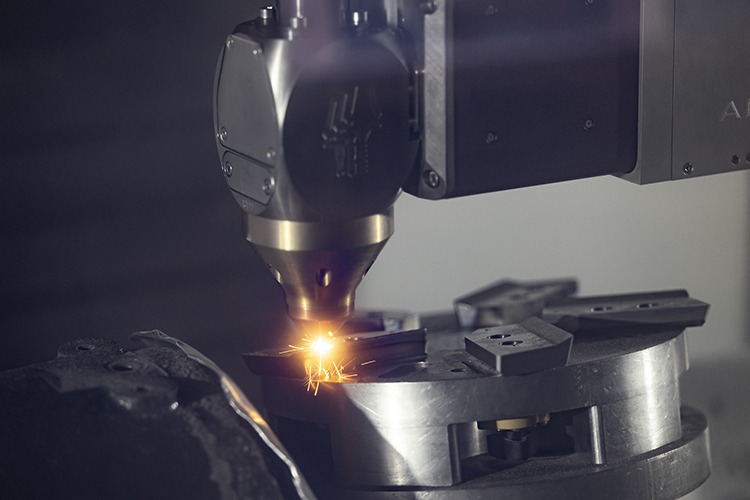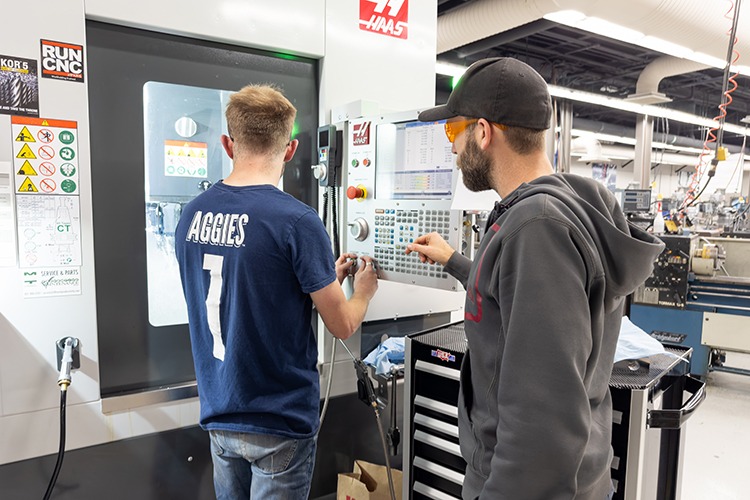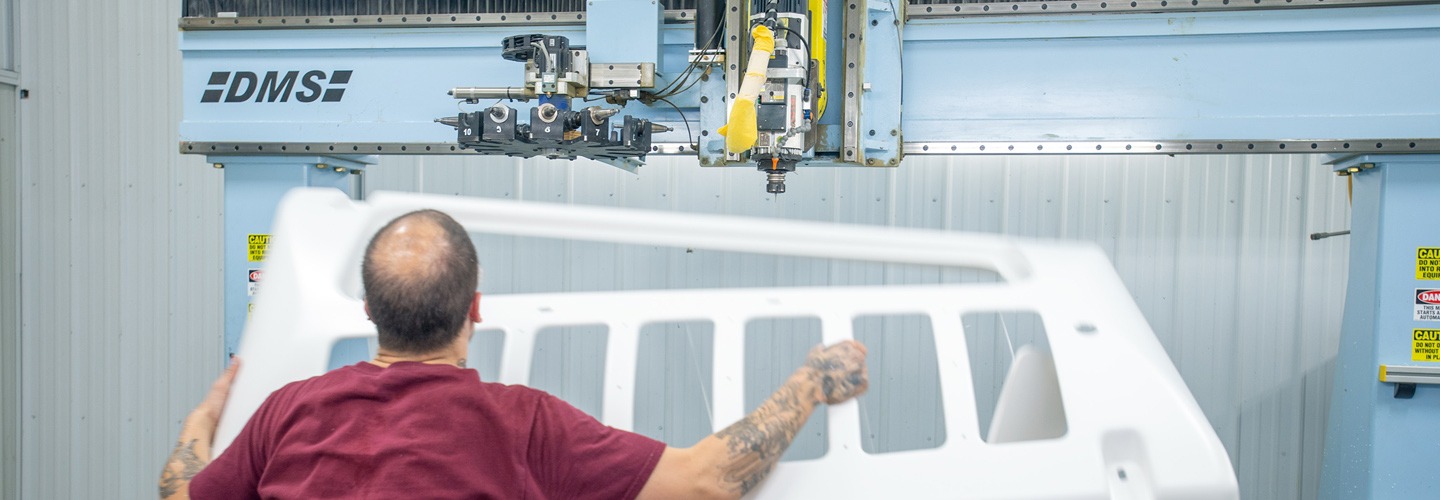
CAM Software Sets Plastic Thermoformer on Route to Profitability
During the thermoforming process, a plastic sheet is heated until pliable then placed in or over a mold before the air is removed by vacuum. Once parts are formed, surface finish and trimming operations are performed with 3- and 5-axis CNC routers. All models feature 5-foot x 10-foot work surfaces to accommodate large parts. Despite these seemingly spacious work surfaces, programmers face machine-size limitations. The company chose Mastercam as its CAD/CAM software solution to help resolve that issue and provide process improvements
Quick Facts
Product Used: Lathe, Mill, Router
Industry: Moldmaking, Job Shop
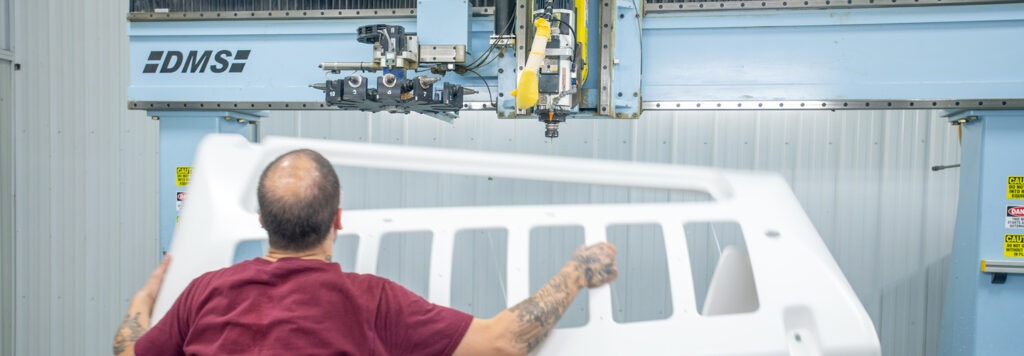
Project Details
- The Challenge: Expanding the customer base by manufacturing more complex parts and improving product quality.
- The Solution: Mastercam, the most widely used CNC software for CAD/CAM operations.
- The Benefits:
- Powerful geometry creation capabilities allow machines to cut at angles and accommodate large parts.
- Mastercam Router enables fast and efficient router cutting, from optimized pocketing to highly specialized toolpaths.
- Dynamic Motion toolpaths help push CNC machines to their hardware limitations and capitalize on machine capabilities.
- Compatibility with other modeling software lets designers open files in Mastercam to explore options like analyze distance, angle, and position editing to resolve potential issues.
From Wi-Fi antennae, covers for the Jacksonville Jaguars at EverBank Field to material handling systems for Harley-Davidson Motor Company, SAY Plastics in McSherrystown, Pennsylvania, creates thermoformed plastic solutions for the rail, bus, material handling, recreation, and entertainment industries.
During the thermoforming process, a plastic sheet is heated until pliable then placed in or over a mold before the air is removed by vacuum. Once parts are formed, surface finish and trimming operations are performed with 3- and 5-axis CNC routers. All models feature 5-foot x 10-foot work surfaces to accommodate large parts. Despite these seemingly spacious work surfaces, programmers face machine-size limitations. The company chose Mastercam as its CAD/CAM software solution to help resolve that issue and provide process improvements.
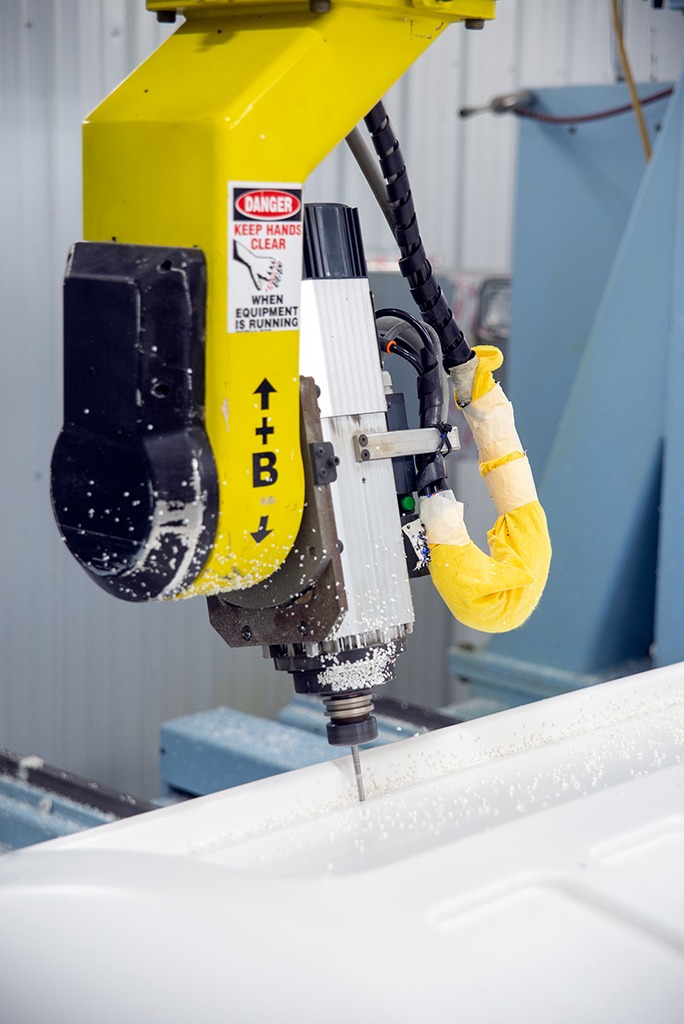
“Mastercam has powerful geometry creation tools that I can use to machine at the angles I need to fit within the envelope of our equipment,” said Thomas Slaybaugh, SAY Plastics engineering manager.
SAY Plastics needed a way to push the envelope—or at least expand it. Its 3-axis machine, used mainly for machining molds and surface finishing, has height limitations. So, if a machinist tries to cut a 108-inch part on a machine with a 120-inch X travel and a 20-inch spindle, cutting both ends is problematic. He must drag or push cuts on the two opposing sides. The CAM software enables him to do just that.
“Mastercam allows us to slice a model that’s too high into multiple layers,” said Slaybaugh. “And it allows me to rapid extremely close to my existing stock so I can maximize what I am able to fit on my machine.”

Because most of SAY’s machining operations are performed with routers, the company relies on Mastercam Router for fast and efficient router cutting. Full 3D CAD modeling; easy pocketing, contouring, and drilling; and streamlined multiaxis cutting, trimming, and drilling help optimize tool life and decrease cutting time.
Using high-speed Dynamic Motion toolpaths in Mastercam, programmers can push CNC machines right up to their hardware limitations. The software calculates angles, feeds, and speeds while Dynamic toolpaths capitalize on machine capabilities. Programmers use the Verify function to check for gouges and, in the Verify simulation screen, view final part shapes. Productivity increases and problems are visible before they ever make it to the shop floor.
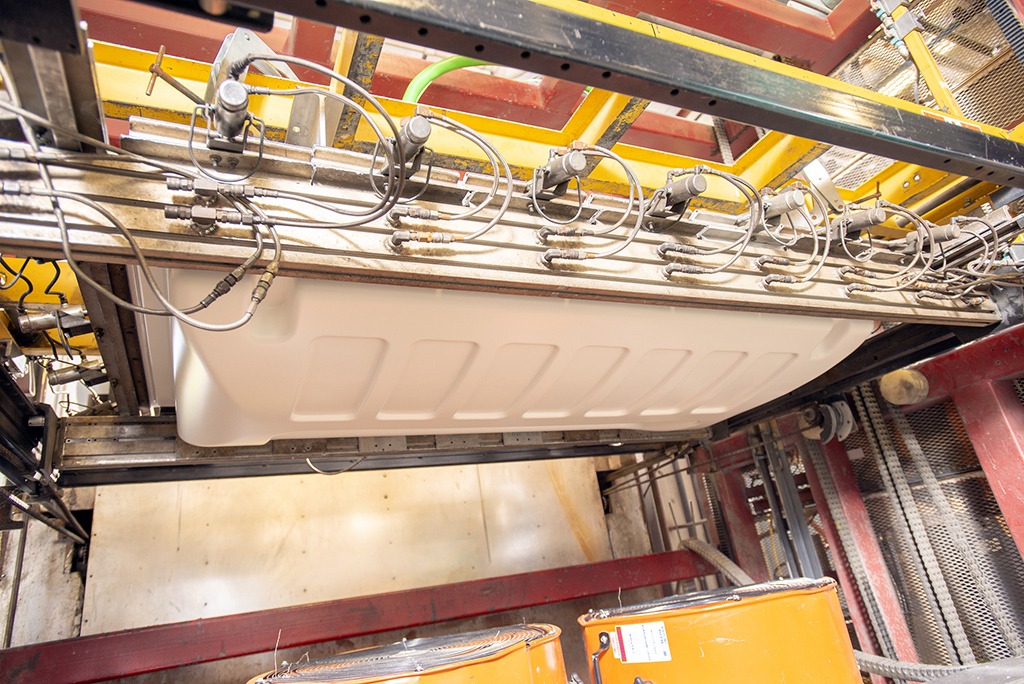
Designers can open files created in other modeling software directly in Mastercam to explore options like analyze distance, angle, and position editing to resolve potential issues. One customer partnered with SAY to design and manufacture a large plastic cover to encase a toilet, a bathroom safety feature for people with disabilities. Fitted alongside a toilet fixtured to a wall, the cover fills the gap between the wall and toilet, reducing the potential risk of a person falling off or sliding to the floor.
To machine the 4-foot x 3-foot x 3-foot parts, tooling was designed at an odd angle to prevent undercuts that could hinder part ejection from tooling. Mastercam, specifically the translate and rotate options, allowed Slaybaugh to duplicate that angle within the program. When the part was created, it was trimmed to a perfect part sitting on top of a perfect fixture, according to Slaybaugh. Changes were needed, however. Using the multiaxis toolpath on a 5-axis CNC router, he modified the CAM program and directed the tool to trim deeper in some places and less deep in others.

The first step in thermoforming a part, no matter its complexity, is moldmaking. Angles are drafted in SOLIDWORKS and, in some cases, Mastercam. “If you have someone who knows Mastercam well, then I prefer a program that is created from Mastercam,” said Slaybaugh. “The results are more accurate all the time rather than accurate some of the time.”
Customers are a priority at SAY Plastics and the driving force behind its SAYtooling System, a tooling development program geared toward new product development, start-up projects, and low- and medium-volume programs. Its goals are to reduce customer costs and lead times. In-house tooling is a key component here, but without reliable CAM software, SAY would be unable to manufacture its own tooling. Considering that an aluminum mold can be made in-house for less than half of the cost of an outsourced mold, the savings are substantial.
“It allows us to offer solutions to customers in dire-need situations,” said Slaybaugh. “We couldn’t machine our fixtures in-house if we didn’t have the software.”
With help from Mastercam’s Dynamic toolpaths, modeling capabilities, and verification software, SAY Plastics produced its own tooling, manufactured more complex parts, improved product quality, and expanded its customer base.
“The type of work that we can do expanded greatly,” said Slaybaugh. “Because of increased accuracy, the quality of the parts that we can offer customers was increased.”

Customer Quote
“If you have someone who knows Mastercam well, then I prefer a program that is created from Mastercam. The results are more accurate all the time rather than accurate some of the time.”
– Thomas Slaybaugh, Engineering Manager, SAY Plastics, McSherrystown, Pennsylvania
